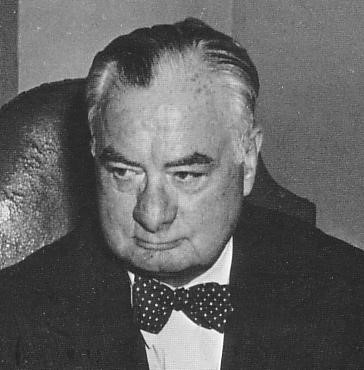Joseph B. Keenan

Joseph B. Keenan (1934-1936)
Early History: Joseph Berry Keenan was born in 1888 in Pawtucket, Rhode Island. He graduated from Brown University in 1910, and earned his law degree from Harvard Law School in 1913. He served in France during World War I and later joined the Judge Advocate General’s Office. In 1919, he became a Special Assistant to the Ohio Attorney General, where he focused on combating organized crime.
In 1933, Attorney General Homer S. Cummings recruited Mr. Keenan to serve as a Special Assistant at the U.S. Department of Justice to help address an organized crime wave that was gripping the nation. In this role, Mr. Keenan led prosecutions against Depression-era gangsters including “Machine Gun Kelly” and members of the Barker-Karpis gang, whose criminal exploits terrorized and captivated the American Midwest during the 1930’s.
Tenure: In January 1934, President Franklin D. Roosevelt appointed Mr. Keenan to serve as Assistant Attorney General of the Criminal Division, where he was a key liaison between the White House and Congress on various issues, including legislation addressing kidnapping and organized crime. For example, Mr. Keenan played a leading role in drafting the Federal Kidnapping Act, which was prompted by the 1932 kidnapping and murder of aviator Charles Lindberg’s toddler son.
Later Career: In November 1945, President Harry S. Truman appointed Mr. Keenan to serve as Chief Prosecutor for the International Military Tribunal for the Far East (better known as the “Tokyo Tribunal”). In that role, he led efforts to investigate and prosecute war crimes committed by Japanese military and civilian leaders during World War II—including prosecuting 28 high-ranking wartime defendants, such as former Prime Minister Hideki Tojo. Mr. Keenan died in 1954 in Asheboro, North Carolina.
This material is based on the review of a variety of historical sources and its accuracy cannot be guaranteed. If you have any corrections or additional information about this individual or about the history of the Criminal Division, please contact the Division.

 U.S. Department
of Justice
U.S. Department
of Justice